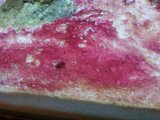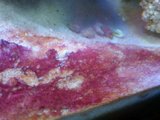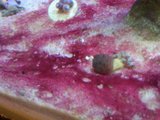55 gallon hex, setup about 5 months, about 40+ lbs of live rockstocking list yellow tang, 2 clowns, 3 damsels (spotted, 3 strip and blue) anemone and a few coral frags
about a month ago I started getting a red "film" on the sand, not really going anywhere else mainly staying on the sand.



any ideas on fixes? I vacummed it up during a water change and it came right back.
test results
1.23 salinity
0 amonia
0 nitrate
0 nitrite
8.2 ph
previous thread:
http://www.aquariumadvice.com/forums/f19/55-gallon-hex-saltwater-132778.html
about a month ago I started getting a red "film" on the sand, not really going anywhere else mainly staying on the sand.



any ideas on fixes? I vacummed it up during a water change and it came right back.
test results
1.23 salinity
0 amonia
0 nitrate
0 nitrite
8.2 ph
previous thread:
http://www.aquariumadvice.com/forums/f19/55-gallon-hex-saltwater-132778.html
Last edited:
